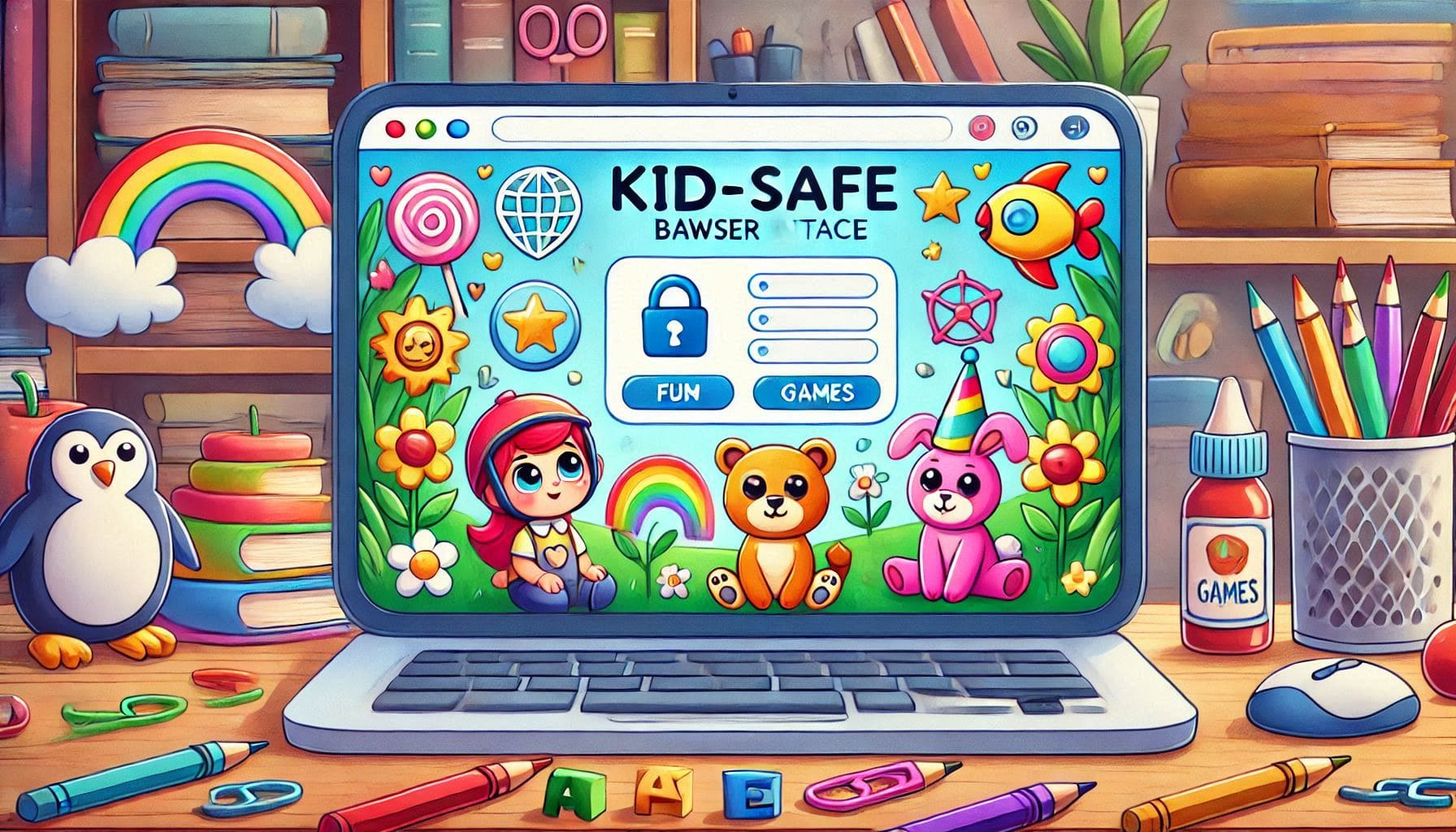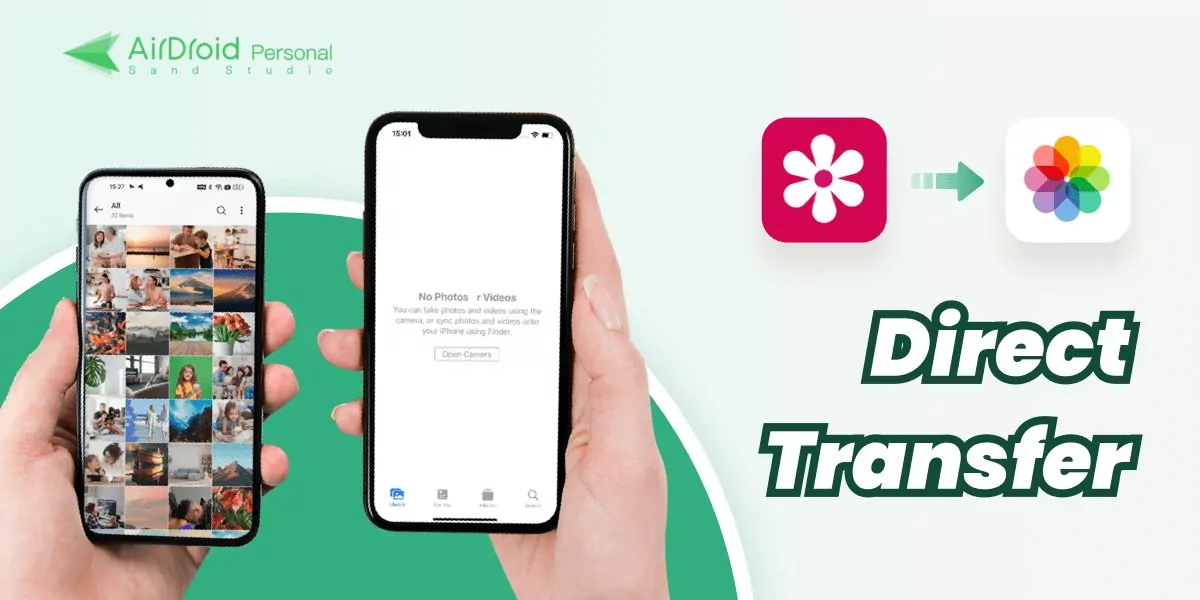Kid-Safe Browsers: Why Do You Need a Kid-Safe Browser?
If you're a parent like me, you've probably wondered how to let your child explore the internet without stumbling across something inappropriate—or worse, harmful. That's where kid-safe browsers come in. These browsers are designed to create a safer, age-appropriate online environment for children.
Unlike standard options like Chrome or Safari, which provide unrestricted access to the entire internet, kid-safe browsers are built with filters and controls to ensure kids only access content that's suitable for them.
In this guide, I'll cover everything you need to know about kid-safe browsers, why you need one, and how to pick the best kid-friendly browser for your family's needs.
What Is a Kid-Safe Browser?
A kid-safe browser is a web browser specifically designed to provide children with a safe and age-appropriate online experience.
Unlike traditional browsers, which open the door to the entire internet, child-safe browsers create a protected environment where inappropriate content is filtered out, and only approved websites are accessible.
These browsers don't just filter content; they also include various parental control options like screen time limits and password protection. The design is also simplified, making the experience better for young users.
For example, some browsers remove complex features such as right-click menus or the option to access your computer's files.
On the flip side, traditional browsers don't come equipped with such safeguards by default. While you can add extensions or third-party parental controls, it's often a tedious process to set up and maintain, and there's always a risk of gaps in protection.

Why Do We Need Kid-Safe Browsers?
A question I often ask myself is: "Did the makers of the internet build it keeping the safety of children in mind?"
It's hard to come up with an affirmative answer.
A lot of parents might relate to this—the internet is anything but a safe place for kids. Its unfiltered nature can expose kids to content and interactions that may cause anxiety, fear, or distress, potentially leading to long-term emotional impacts.
Here are some of the main risks we need to consider:
- Inappropriate content: Explicit material, violent videos, and disturbing images can appear without warning. These are not just unsuitable—they can be outright traumatizing for kids.
- Cyberbullying: Online interactions can sometimes turn toxic. Bullying and digital harassment are common—which can lead to anxiety, depression, and severe emotional distress.
- Privacy risks: Children are naturally curious, and they may unknowingly share sensitive information, putting them and your family at risk.
- Online predators: Some individuals deliberately exploit the internet's anonymity to target children, often making unwanted sexual solicitations

This is where kid-safe browsers step in, adding an extra security layer that directly addresses these risks.
As mentioned earlier, kid-safe browsers filter out the bad—such as disturbing or dangerous websites, videos, and images—before they even reach your child's screen. They also come with various parental control features, such as:
- Restricting screen time
- Blacklisting/whitelisting specific websites
- Monitoring search history
Some even come with age-specific filters, so you can set different filters according to your child's age, fostering learning and exploration at all developmental stages.

Privacy is another top priority. Kid-safe browsers are designed to prevent data collection and safeguard your child's personal information. Many kid-safe browsers restrict private DMs or public chat rooms, minimizing the risk of cyberbullying.
7 Key Features to Consider When Choosing a Child-Safe Browser
Now that we've seen why kid-safe browsers are important, the next question is: "How do you choose the right one?"
Not all kid-safe browsers are created equal, and some do a better job of addressing specific challenges than others. Here are seven key features to consider when choosing the right kid-safe browser for children:
1Parental Controls
Comprehensive parental control and monitoring tools allow you to set time limits, receive activity reports, and manage permissions—even when you're away from your kids.
For example, when you're busy making dinner and your child asks to use their device, you can set up browsing time limits or block websites directly from your phone without leaving the kitchen. This way, you'll get real-time alerts when children attempt to access blocked content.
2Content Filtering
A friend of mine once shared how their child accidentally stumbled onto a violent video while doing a school project. This could've been prevented if they had a proper filtering system in place.
Content filtering is all about blocking harmful sites and explicit material before it even appears. The best browsers employ multi-layer filtering that includes both automated screening and human-verified content curation.
3Privacy Protection
Kids don't always understand what's safe to share online. I've seen children enter personal details into forms without realizing the consequences.
A good kid-safe browser disables features like online forms or account registrations, ensuring your child's identity stays protected. Seek browsers with strict privacy settings that automatically clear browsing data and block trackers.
4Ease of Use
Setting up a kid-safe browser shouldn't feel like cracking a code. I once tested one that had me digging through complicated settings for 20 minutes just to create a user profile.
The best browsers make setup and day-to-day use intuitive for both parents and kids. The browser should have clear navigation, large buttons, and age-appropriate visual elements.
5Customization Options
Every child is different. For example, I know a parent who customizes their browser to allow extra educational sites for their teenager while keeping restrictions tighter for their younger child.
A good browser lets you adjust settings based on age, maturity, or even specific needs. This includes the ability to create custom whitelists and blacklists of websites and adjust filtering levels as your child grows.
6Cross-Platform Compatibility
The browser should work across multiple devices—including phones, tablets, and computers—so you can ensure a consistent level of safety regardless of which screen they're using or how they access the internet.
7No Targeted Ads or Tracking
How many times has it happened to you—you accidentally click on a flashy pop-up ad that leads to a phishing scam website? This happens even with adults, forget young children.
Kid-safe browsers eliminate this risk by blocking ads entirely and preventing tracking, so your child can browse without distractions or hidden dangers. These browsers often use safe search engines for kids that don't have ads.
Kid-Safe Browser vs Standard Browser—Differences Summarized
While both kid-friendly and standard browsers help you navigate your way around the web, the differences are striking when it comes to child safety. From my extensive testing experience, these differences are crucial for understanding why regular browsers fail to protect children online.
Let's summarize our discussion by stacking up kid-safe browsers vs standard browsers in the following table:
Feature | Kid-Safe Browser | Standard Browser |
| Content Filtering | Built-in filtering with curated safe content database | No built-in child-specific filtering; rely on third-party extensions or settings |
| Parental Controls | Browser activity monitoring, time limits, website restrictions, and detailed reports | Limited parental controls; requires complex configuration external add-ons |
| Security | Multiple child-safety measures like anti-phishing, malware protection, and pop-up blocking | Basic security focused on general malware/phishing |
| Age-Specific Design | Simple interface with child-friendly elements | Complex interface designed for general use |
| Customization | Can customize the experience based on age or activity | General customization options not focused on child safety |
| Safety Concerns | Minimal risk with pre-approved content only | High risk of exposure to inappropriate content, cyberbullying, privacy violations, and intrusive ads |
As you can see, the key differences lie in how each browser addresses child safety.
Kid-safe browsers are built to protect children from harmful content and online risks, while standard browsers leave it up to parents to manually adjust settings and rely on third-party solutions.
If you want peace of mind when your child browses the web, a kid-safe browser is a way to go.
These browsers create a safe and enriching online environment, guiding children toward content that supports their learning and academic growth.












Leave a Reply.